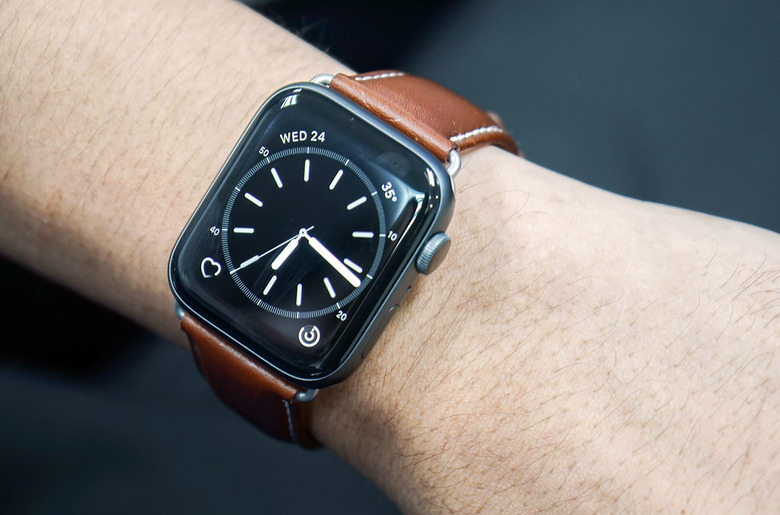Read This Intense Story About How An Apple Watch Saved One Man's Life
The Apple Watch continues to be the most sought-after wearable device on the market, and the smartwatch competitors still imitate it. The health and fitness features that Apple developed over the years are the main advantage the Apple Watch has over competitors. Apple dedicates ample time to new health features during Apple Watch product launches, but the best proof that the Apple Watch saves lives is in the stories we read time and time again. We've seen countless reports over the years where Apple Watch users would credit the wearable for having just saved their lives. It can be something simple like detecting an abnormal heart rhythm or a fall alert. The last such case involves an even simpler feature that has nothing to do with the health monitoring sensors built into the Watch. A man fell through the ice while skating, and it's the Apple Watch that saved his life.
The Apple Watch has several sophisticated built-in health features. The Watch can monitor heart rate, perform ECG readings, and even check blood oxygen levels — some of these are only available on newer devices. The Watch can measure sound levels, track sleep, and detect accidental falls. It automatically detects types of exercise and assesses the user's performance.
But when William Rogers fell through the ice while skating on Salmon Falls River in Somersworth, it was a very different Apple Watch feature that saved his life.
"It was just that terrible feeling. 'Oh my God. I'm going in the water,'" Rogers told WMUR. "First thing I did was try to walrus up on the ice, knowing that I needed to get out of the water as quickly as possible, and the ice just kept breaking underneath me."
But nobody was around him, and he couldn't reach his iPhone to call for help. He was in the water for several minutes, and hypothermia started setting in. "I remember telling myself, 'OK, don't panic. Don't panic. Figure out what your options are here,'" he told WMUR. That's when Rogers turned to his Apple Watch, using it to call 911 and ask for help.
"It worked. Saved my life, I think," Rogers said. "So, I told them that I probably had 10 minutes before I was not gonna be able to respond anymore." The firefighters were there to help him within five minutes, throwing him a line and pulling him out. "I'm really grateful for them. So, thank those folks. I thank them," Rogers said.
Firefighters warned people not to go ice skating on ice if they don't know how thick the ice layer is. Ice is unpredictable in warm weather, even for seasoned skaters like Rogers.
The Apple Watch Series 7, expected to launch later this year, might debut another potentially life-saving feature. The device will reportedly include a glucose-monitoring sensor, that would help people with diabetes check their blood sugar levels without drawing any blood.
